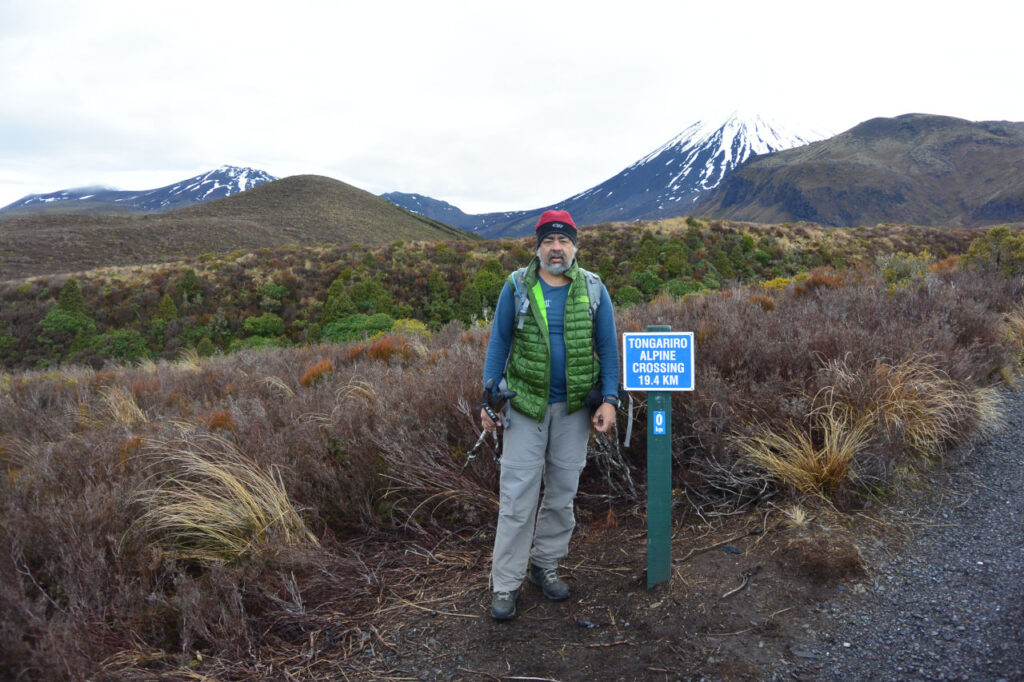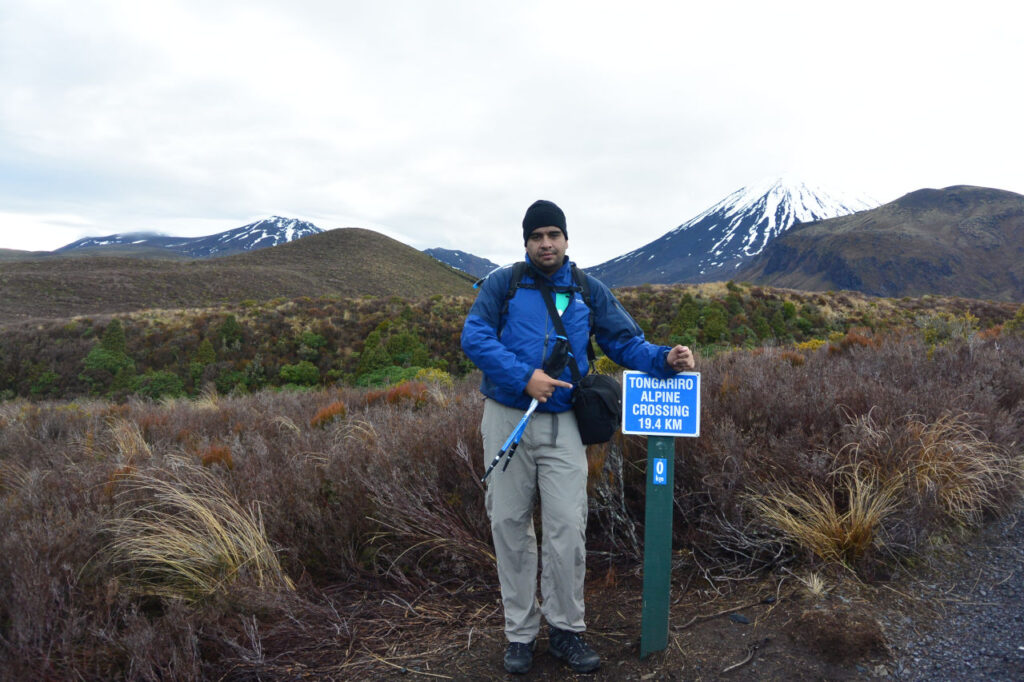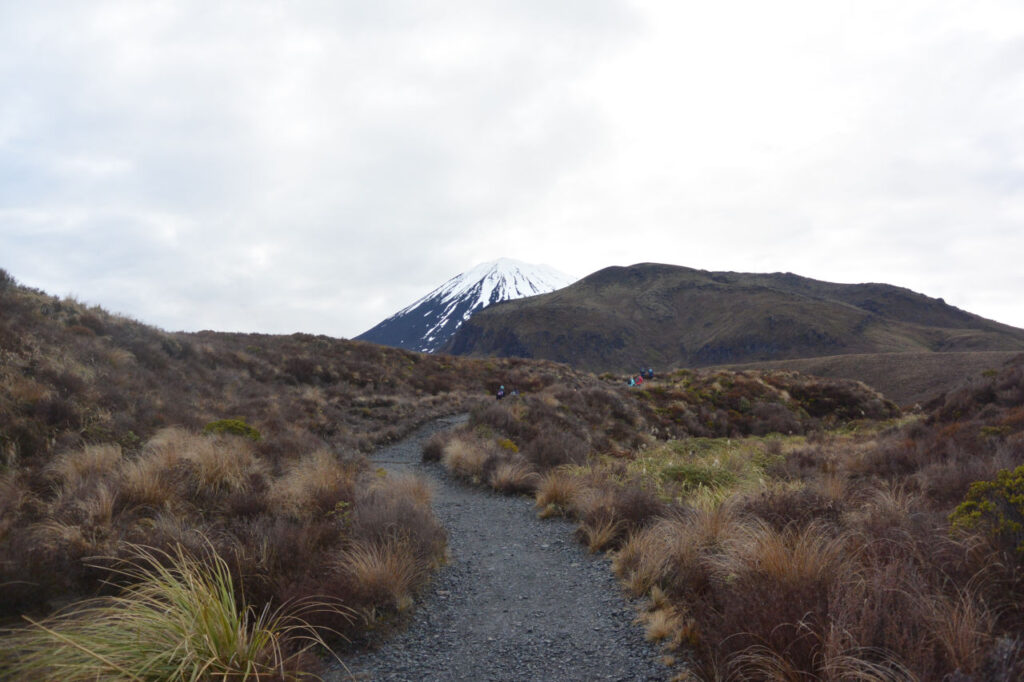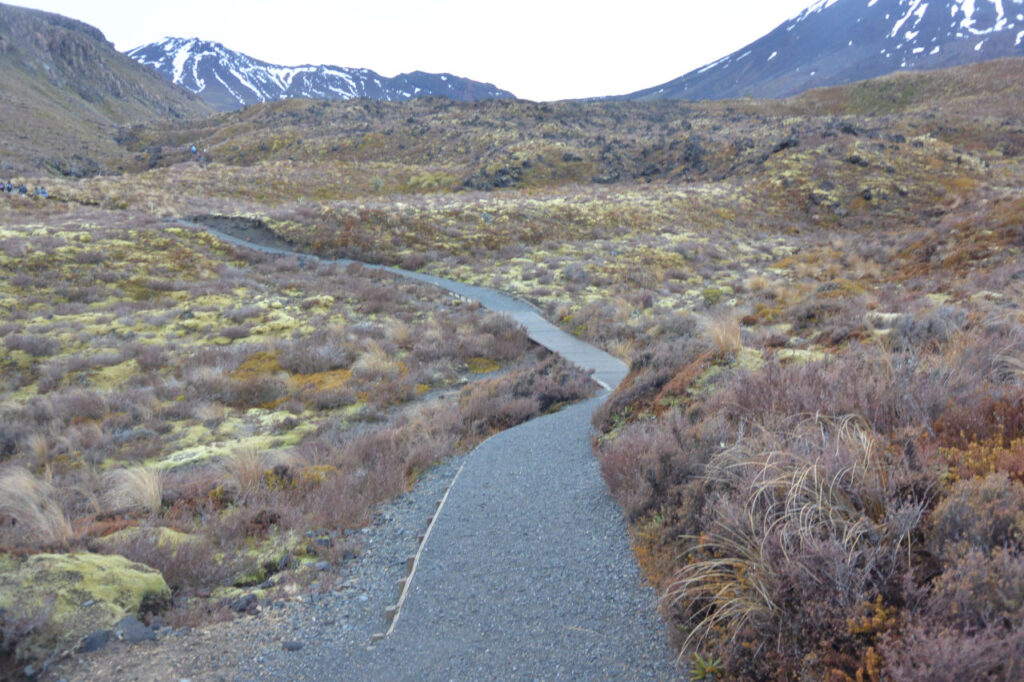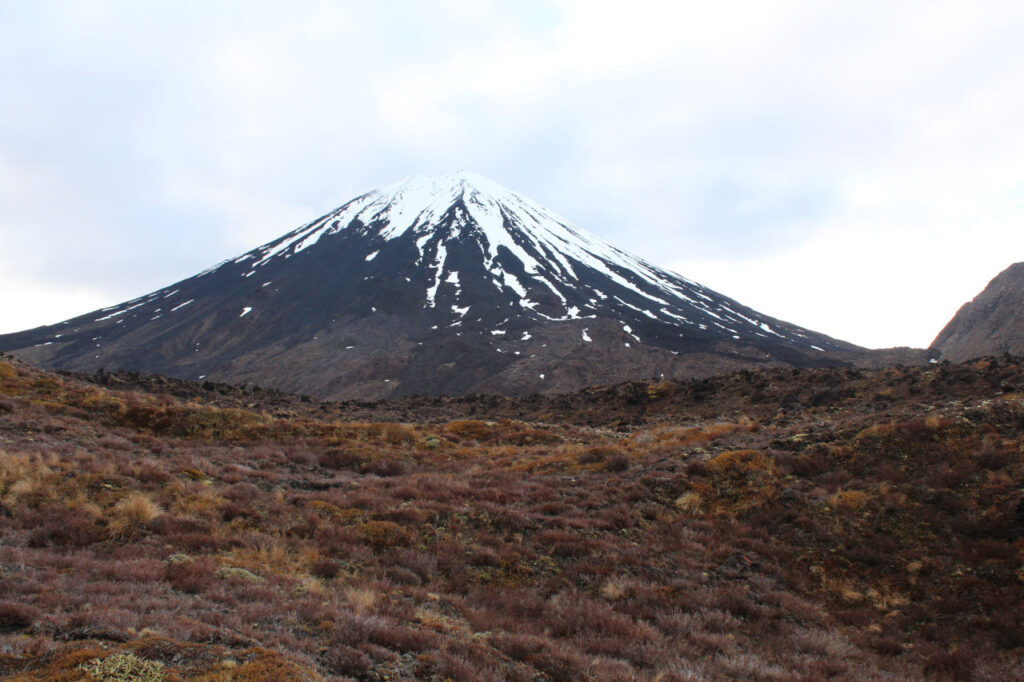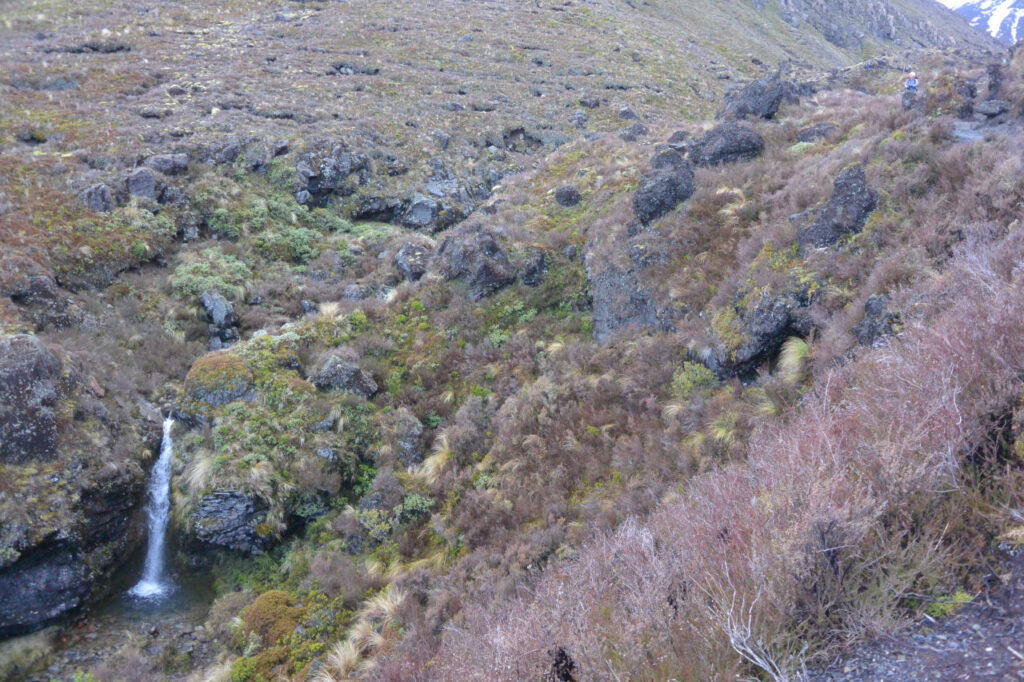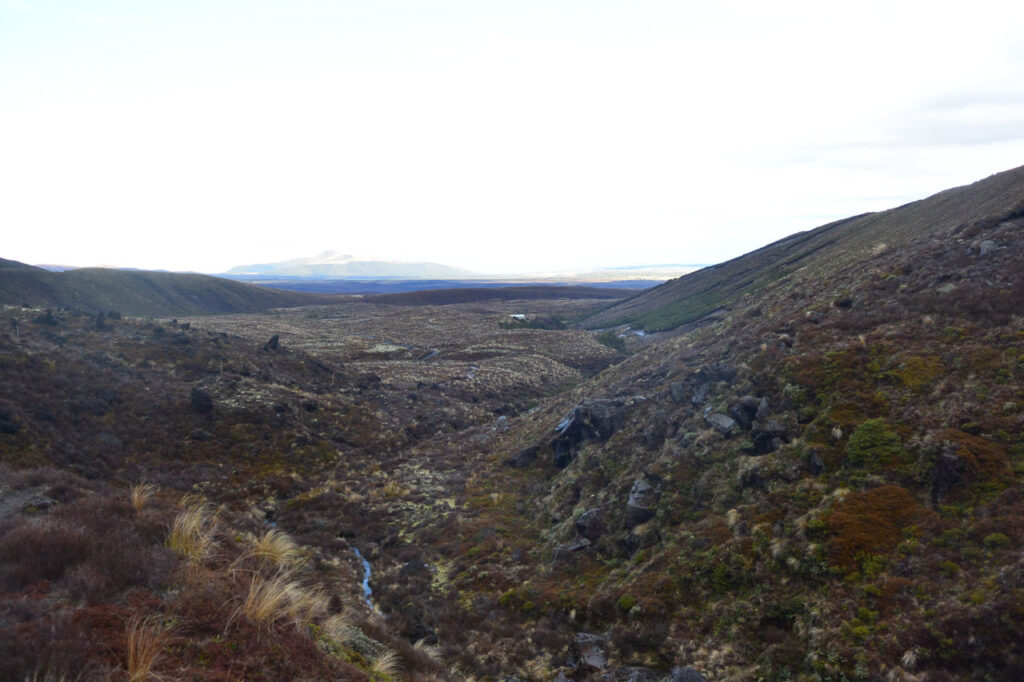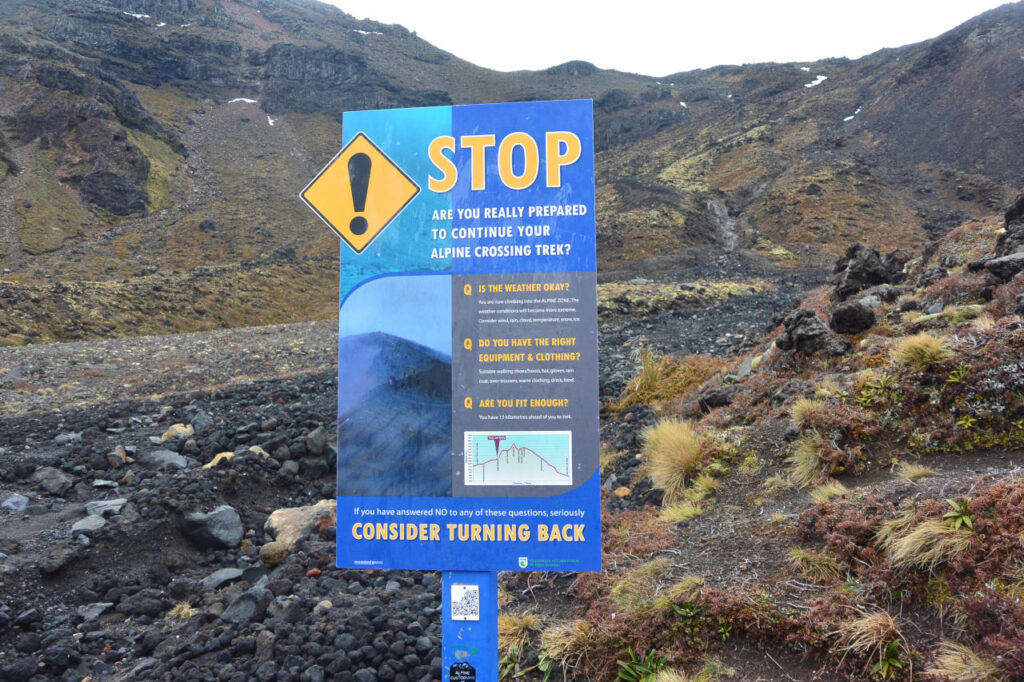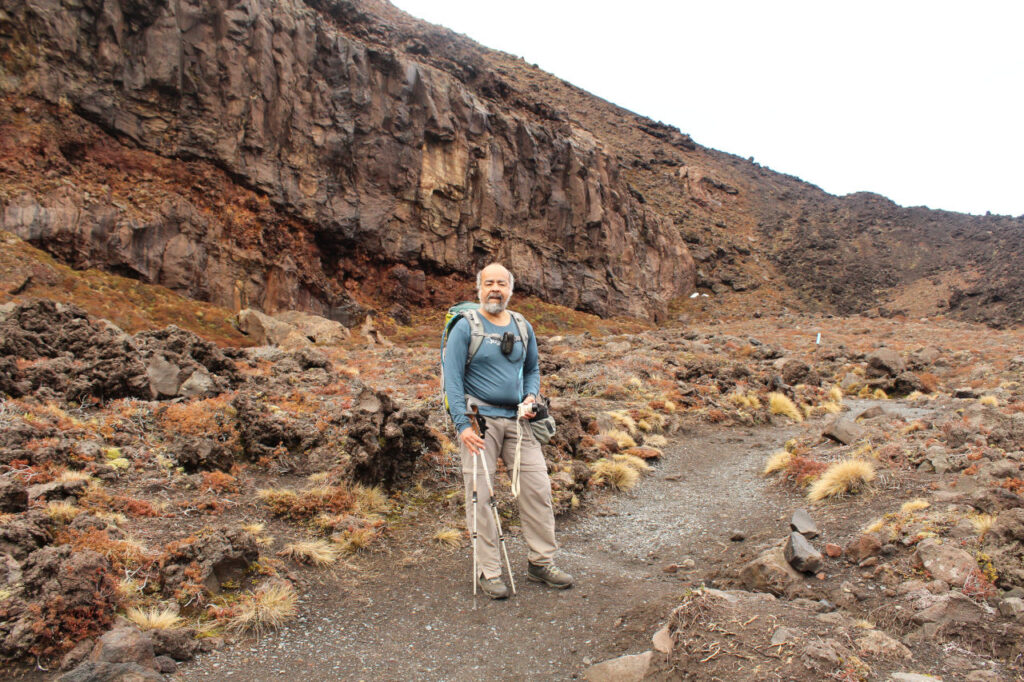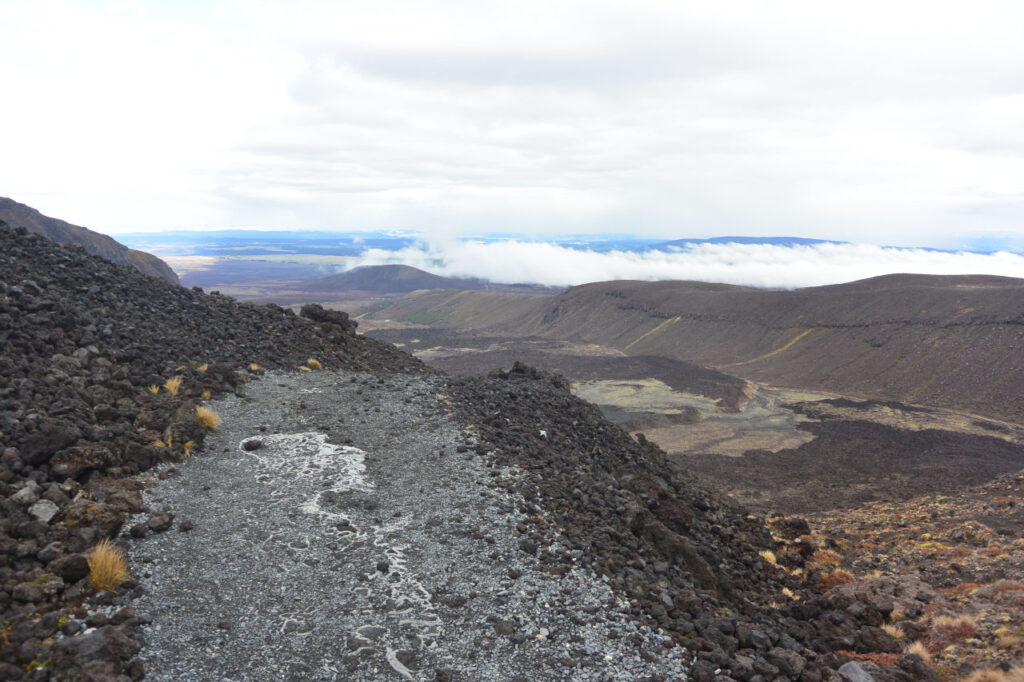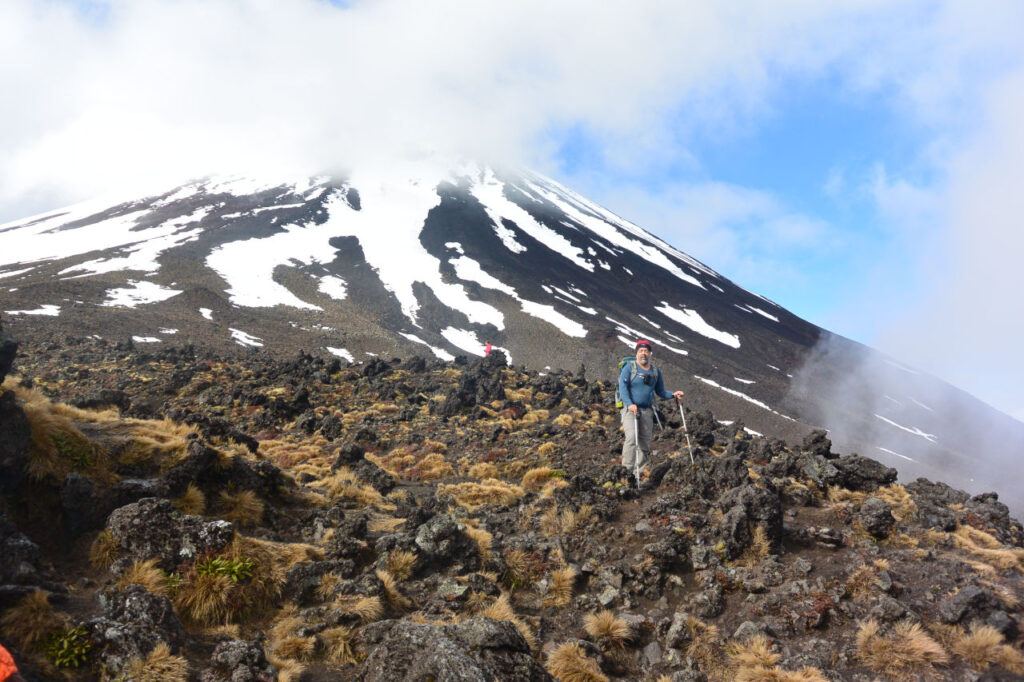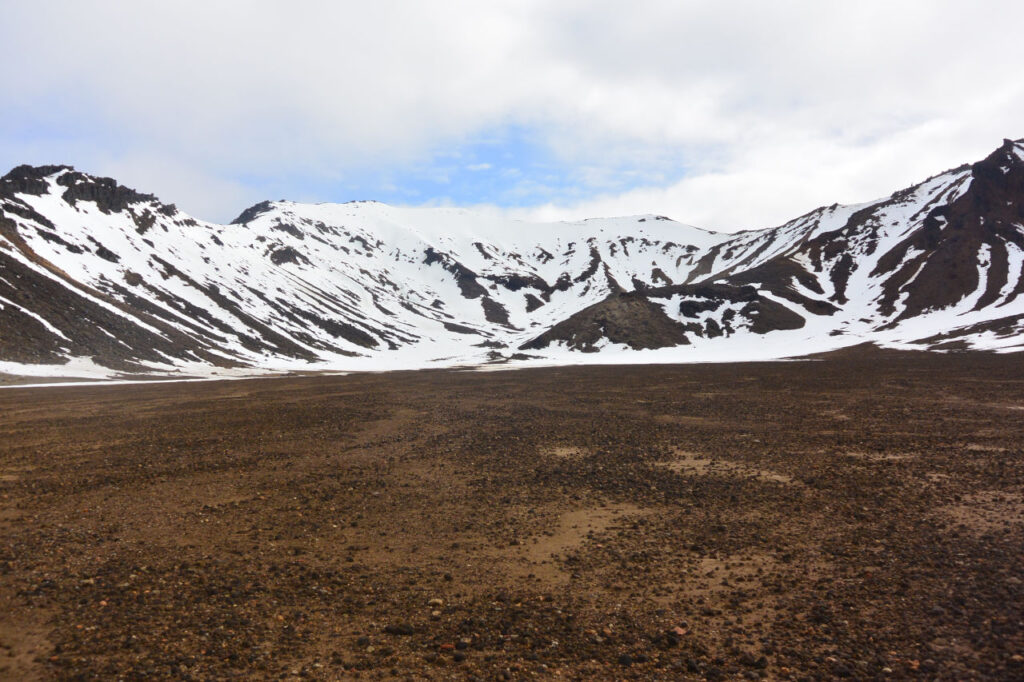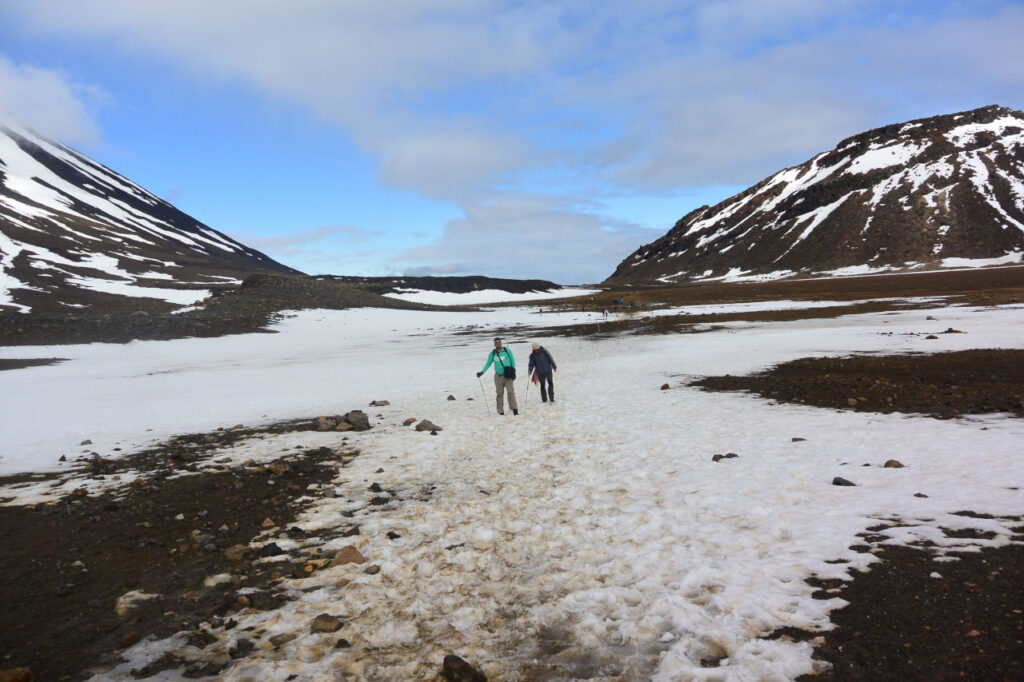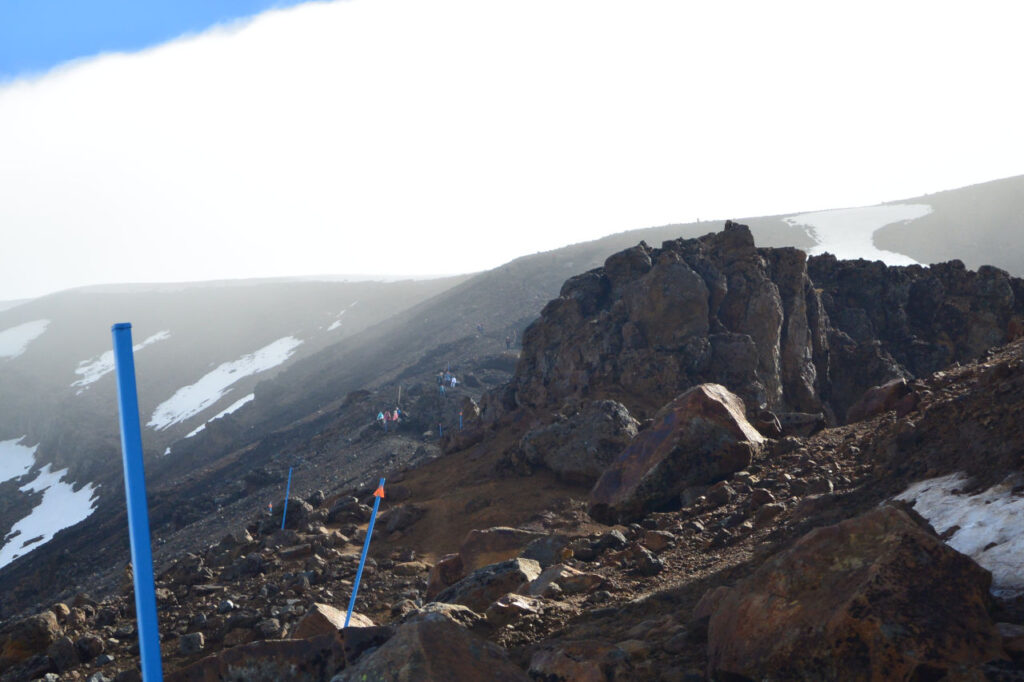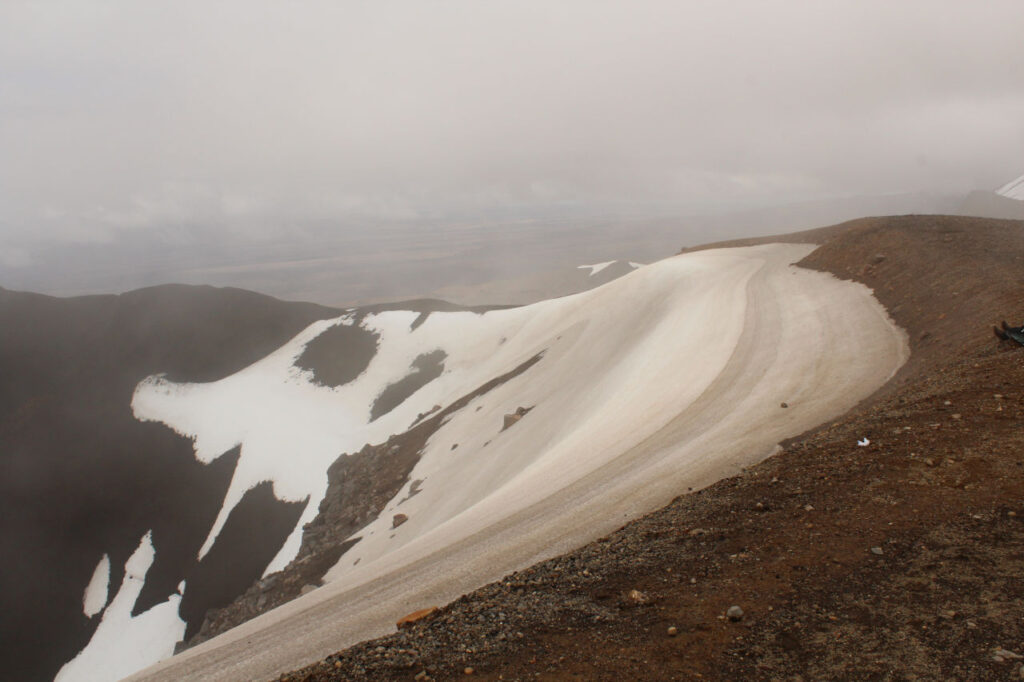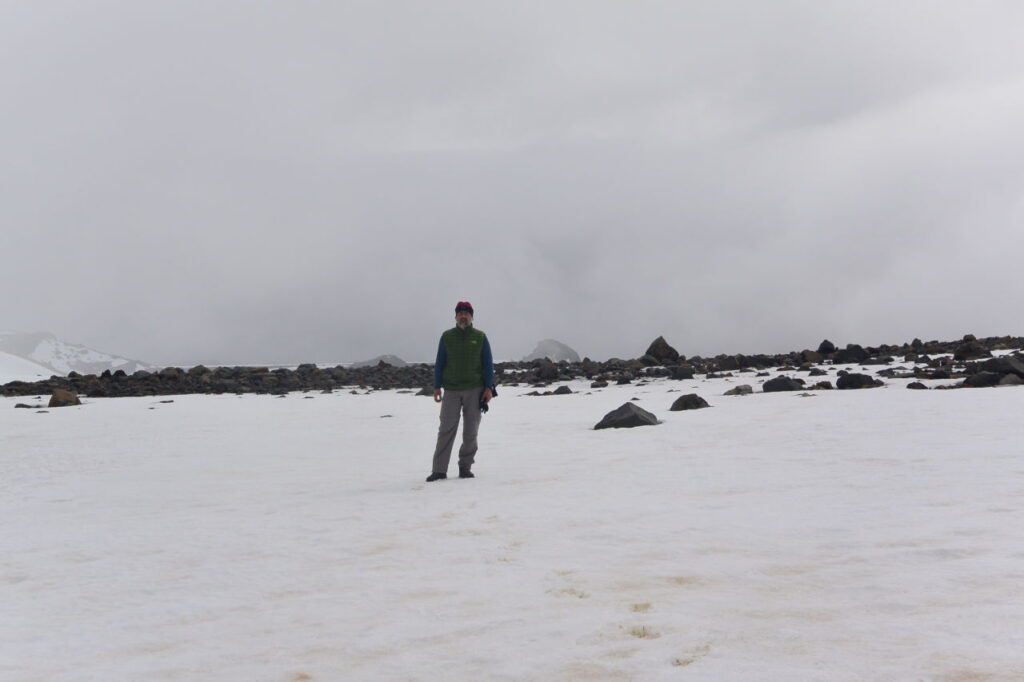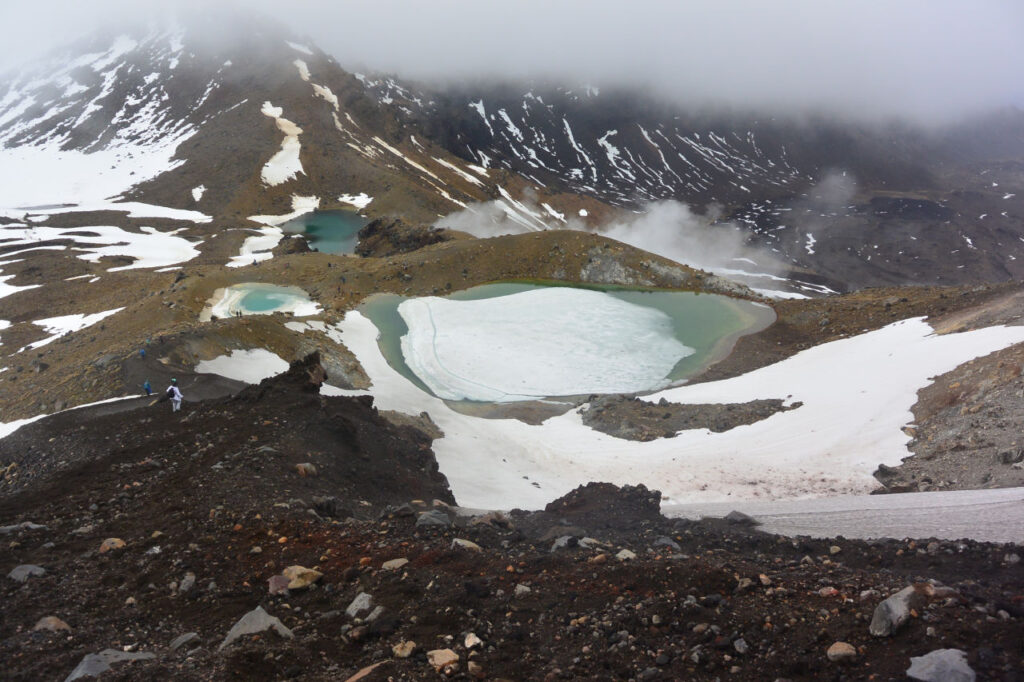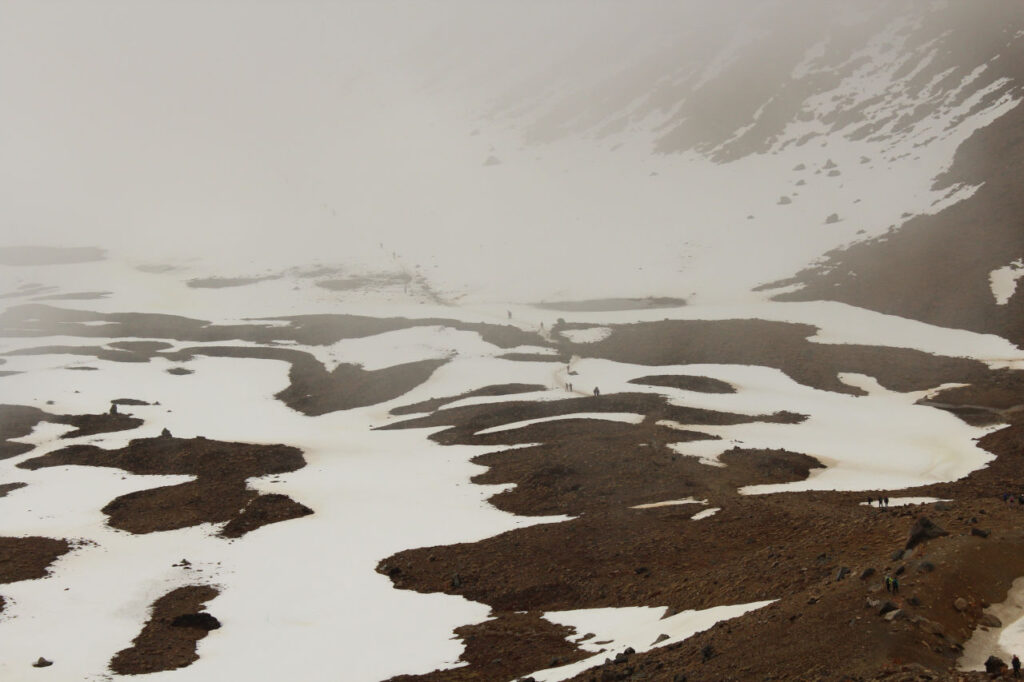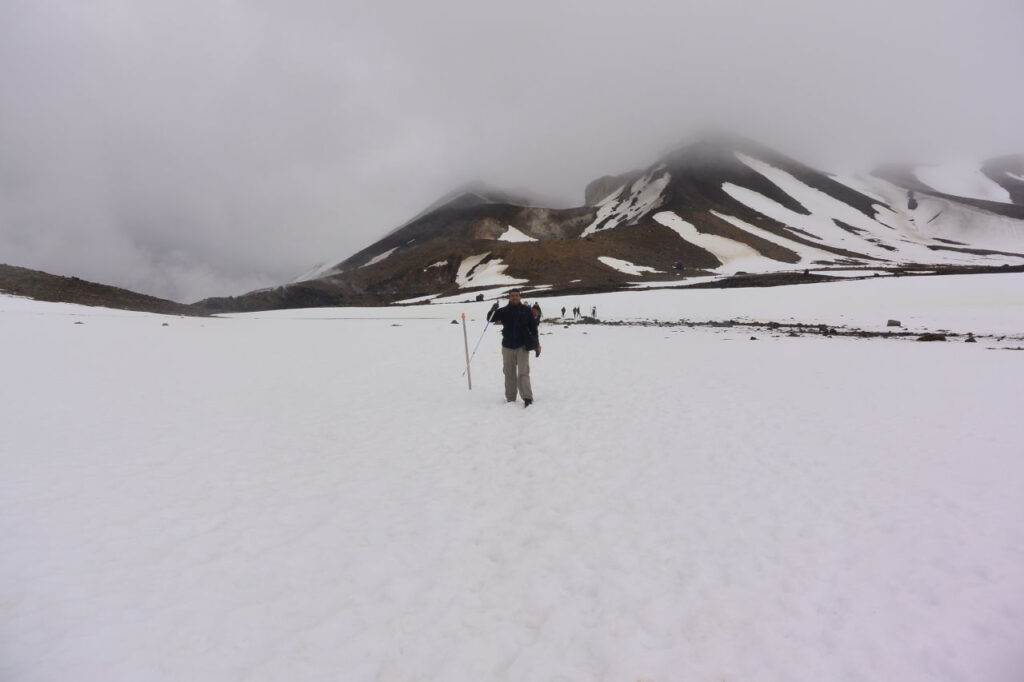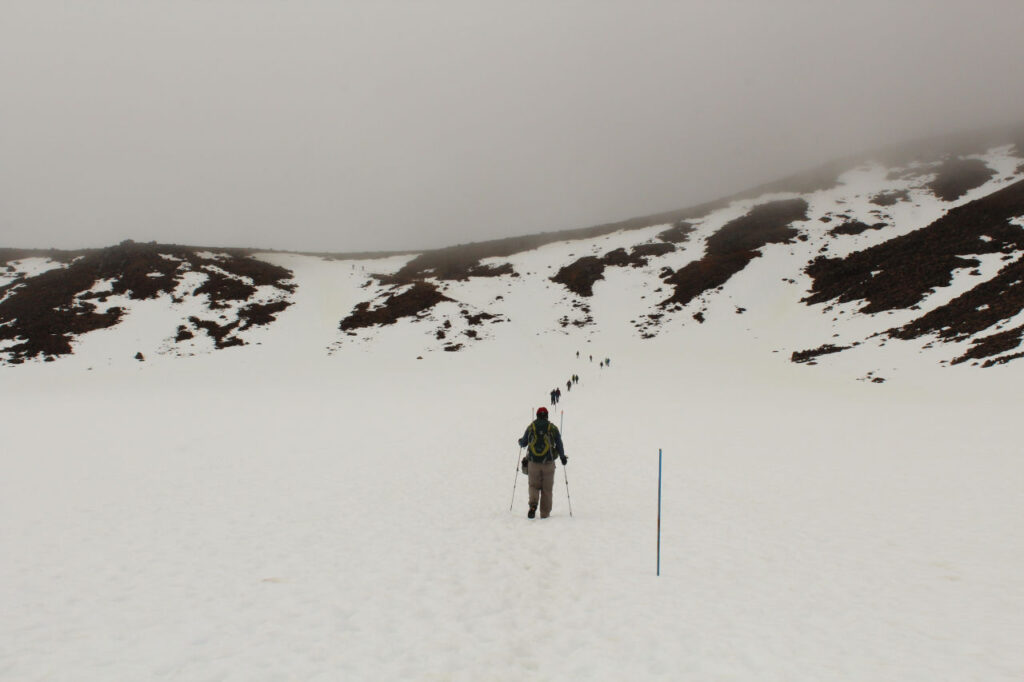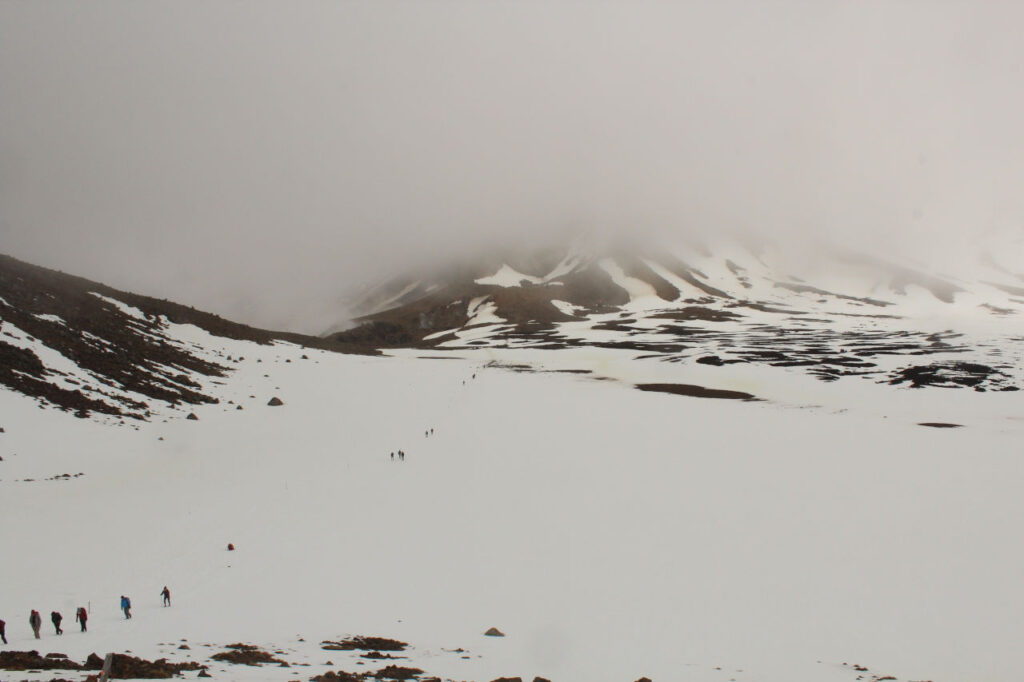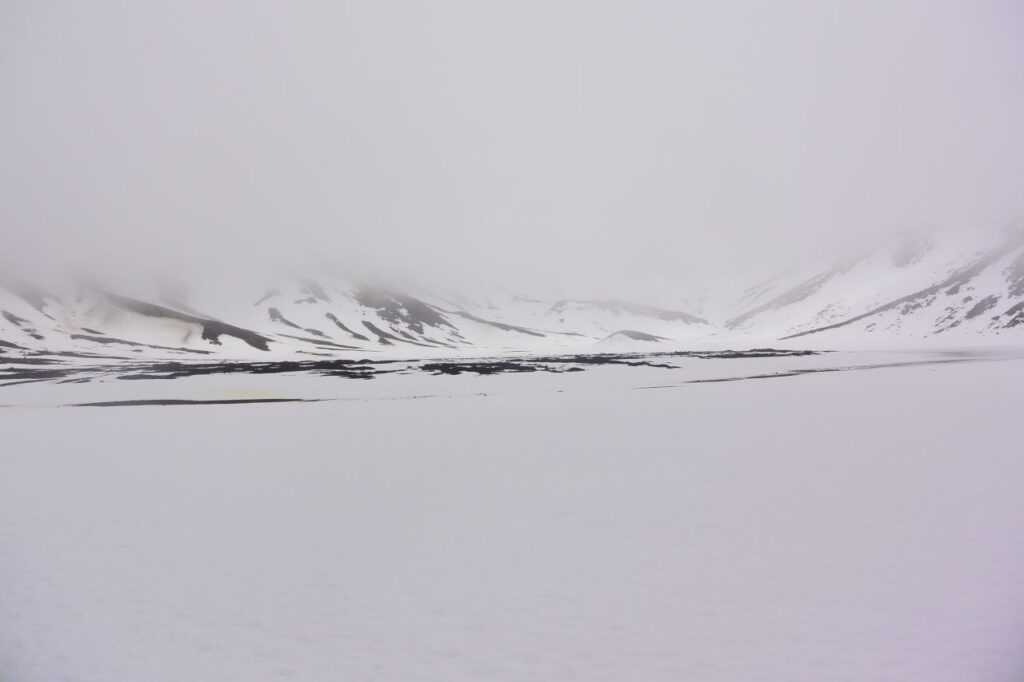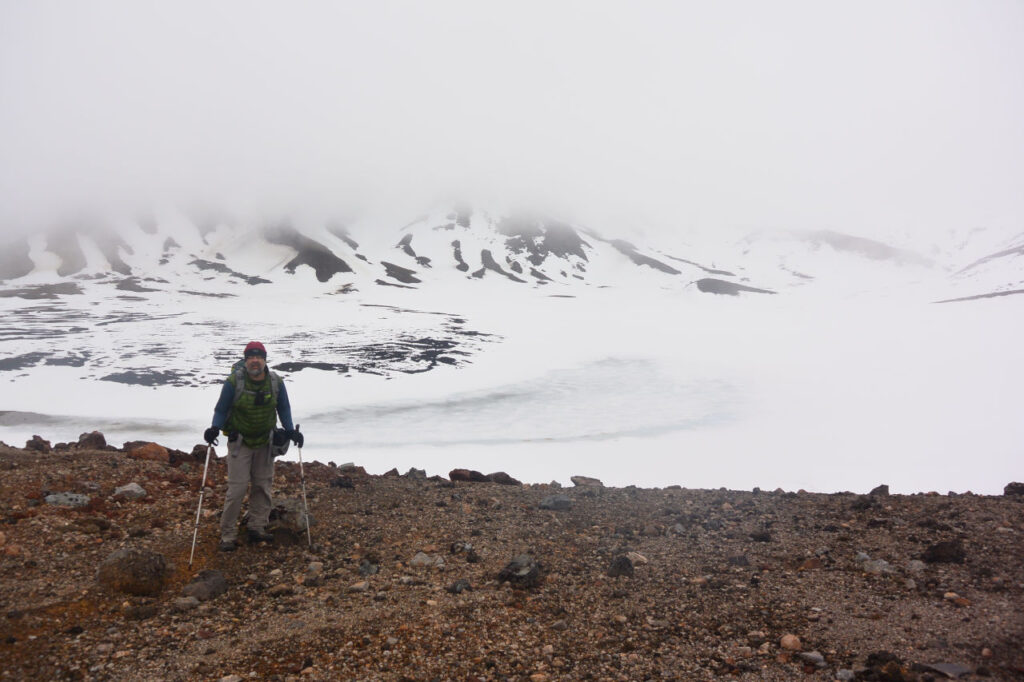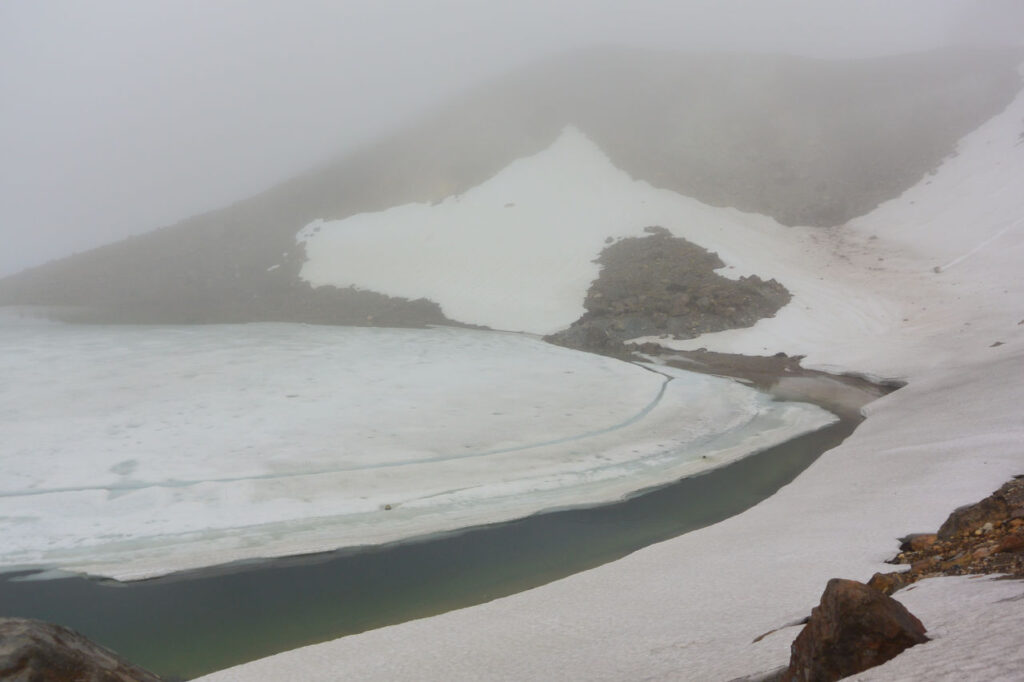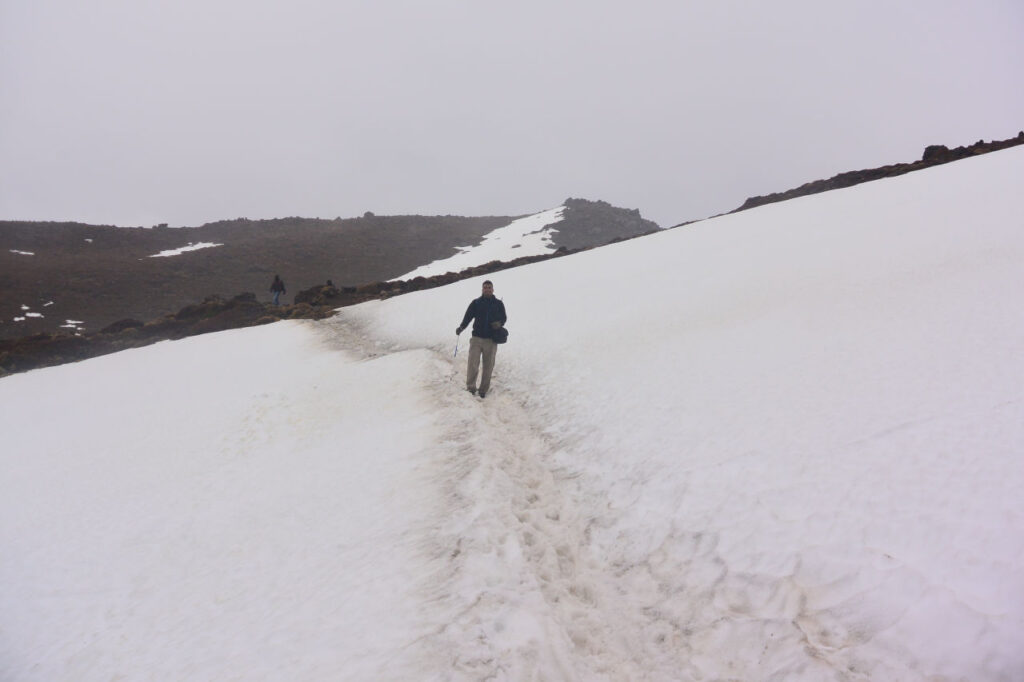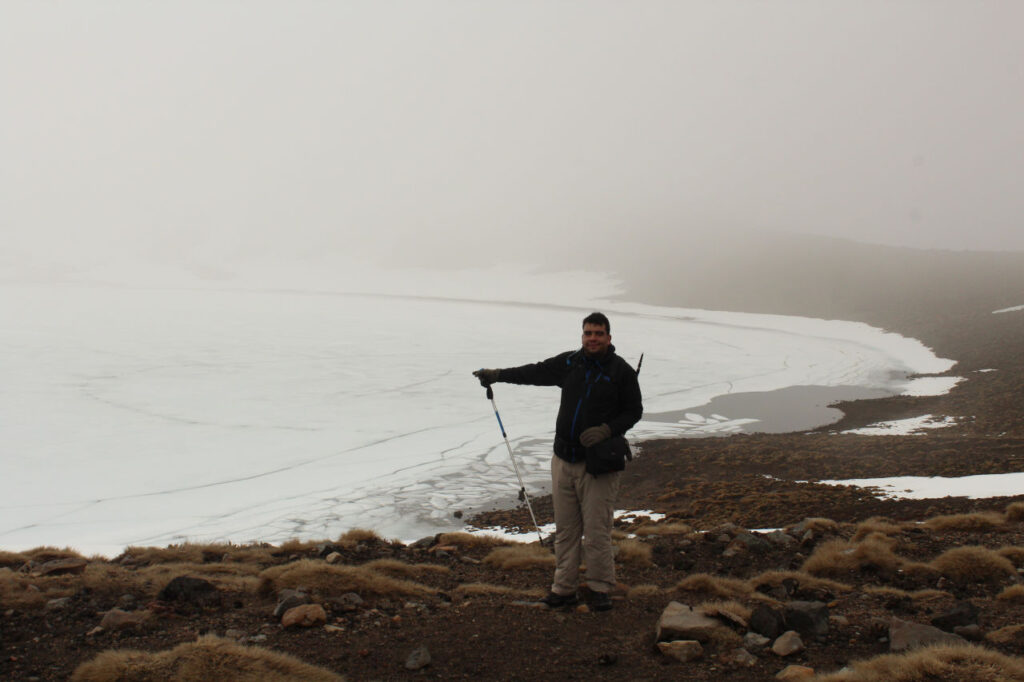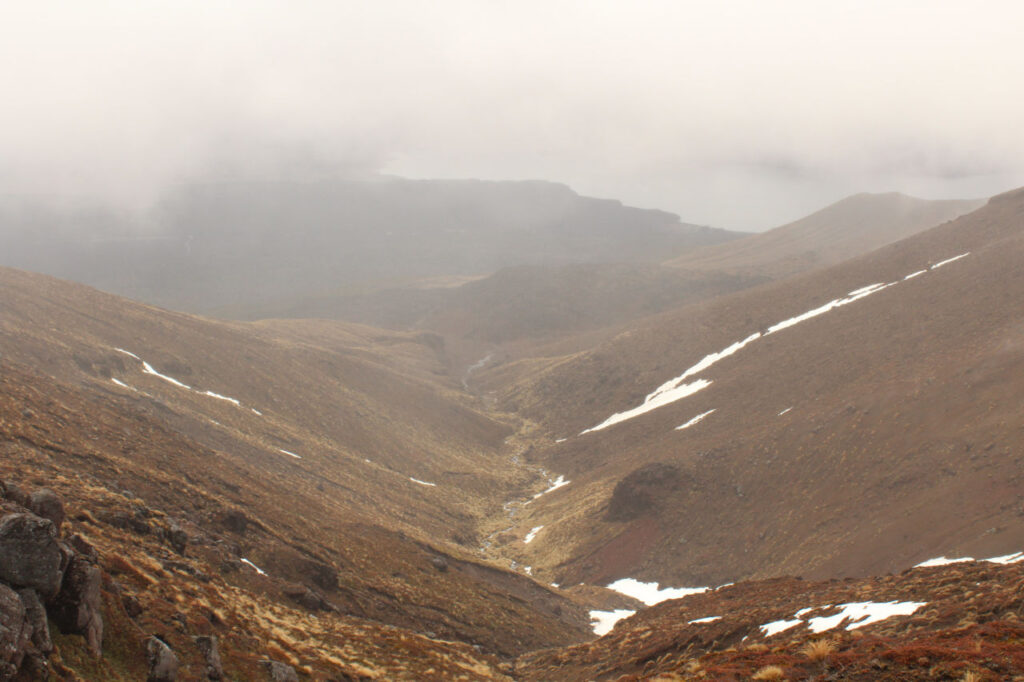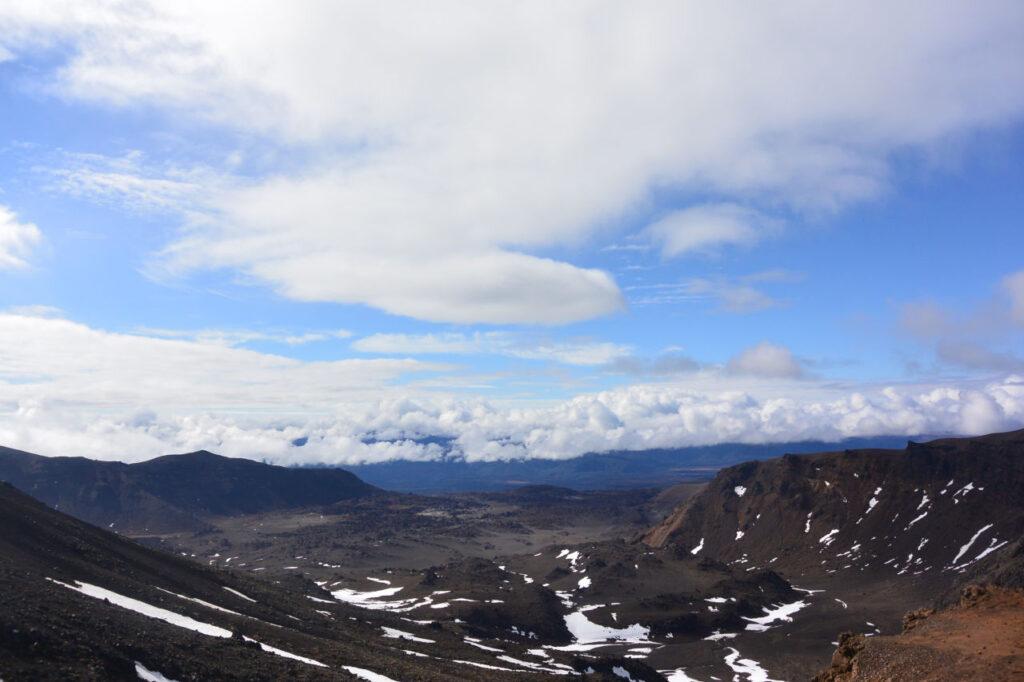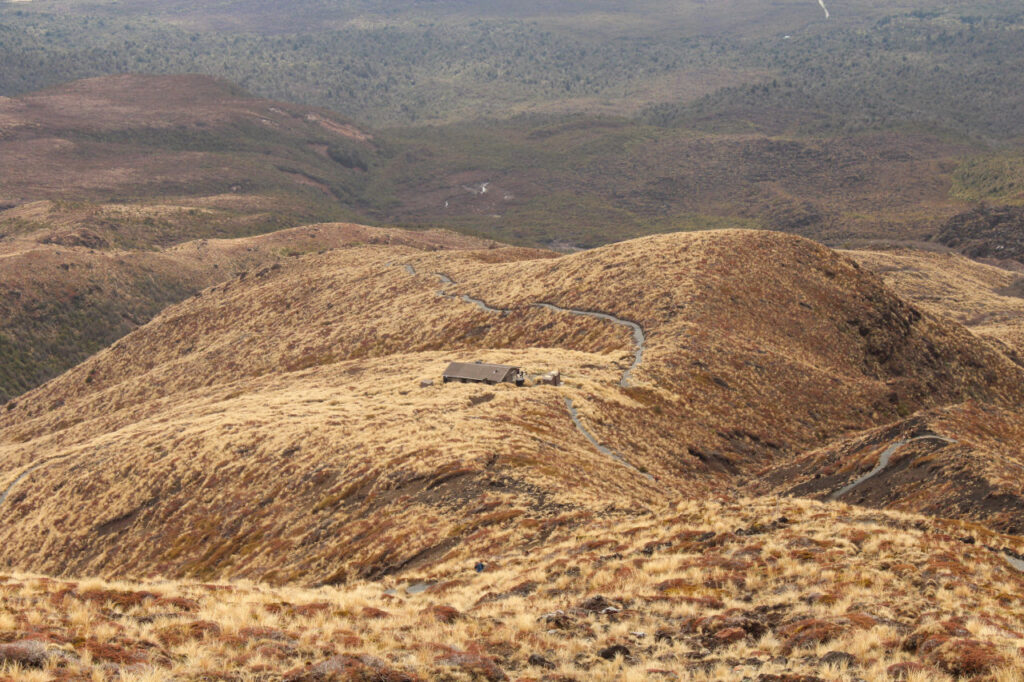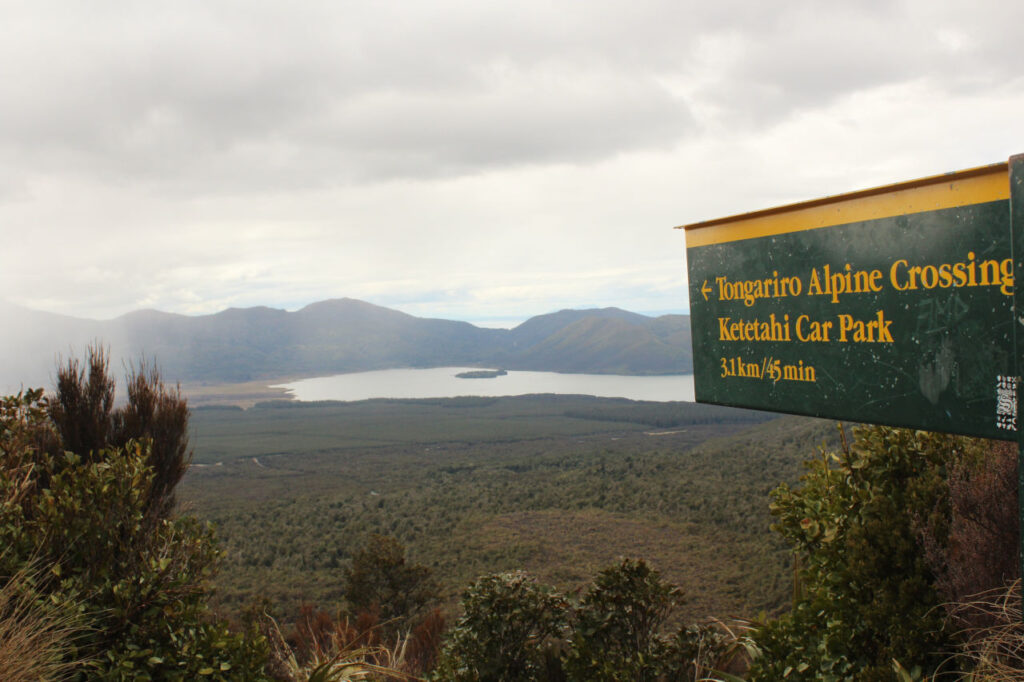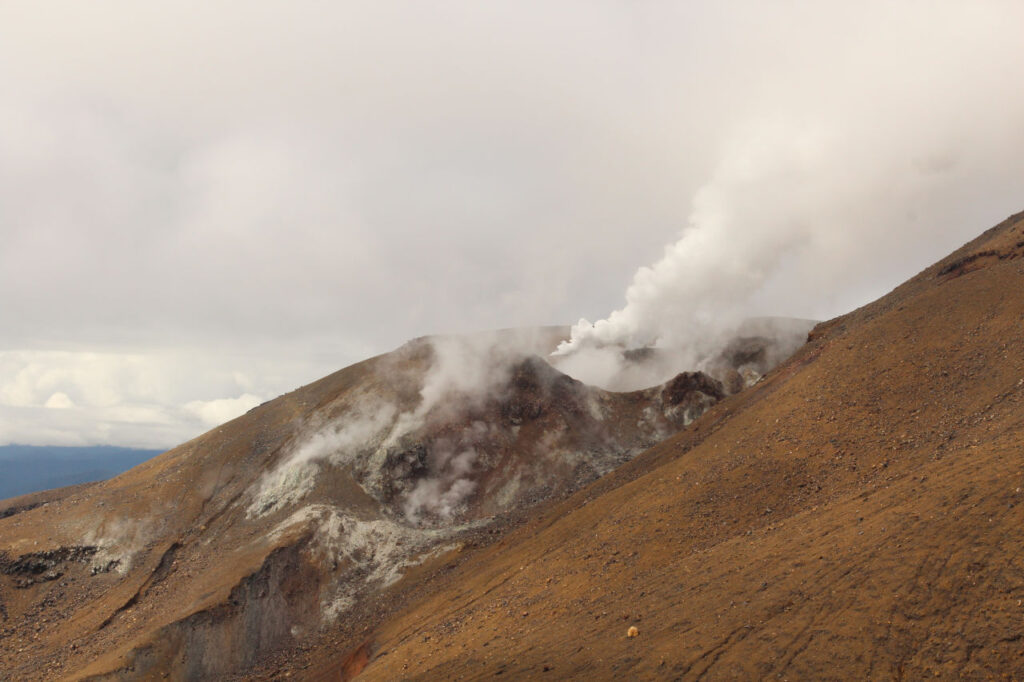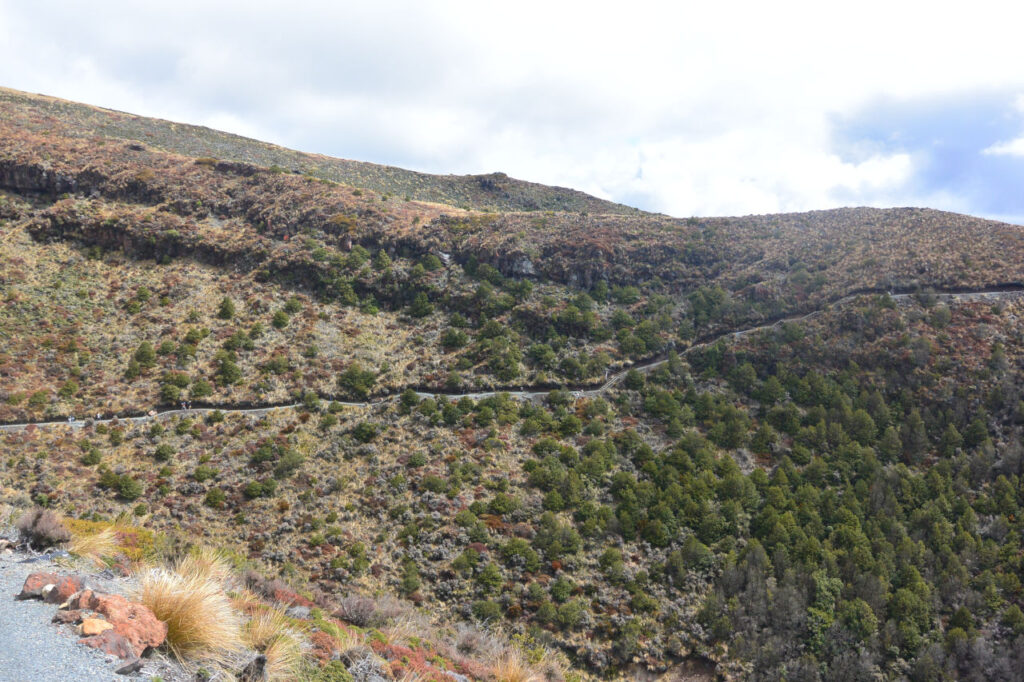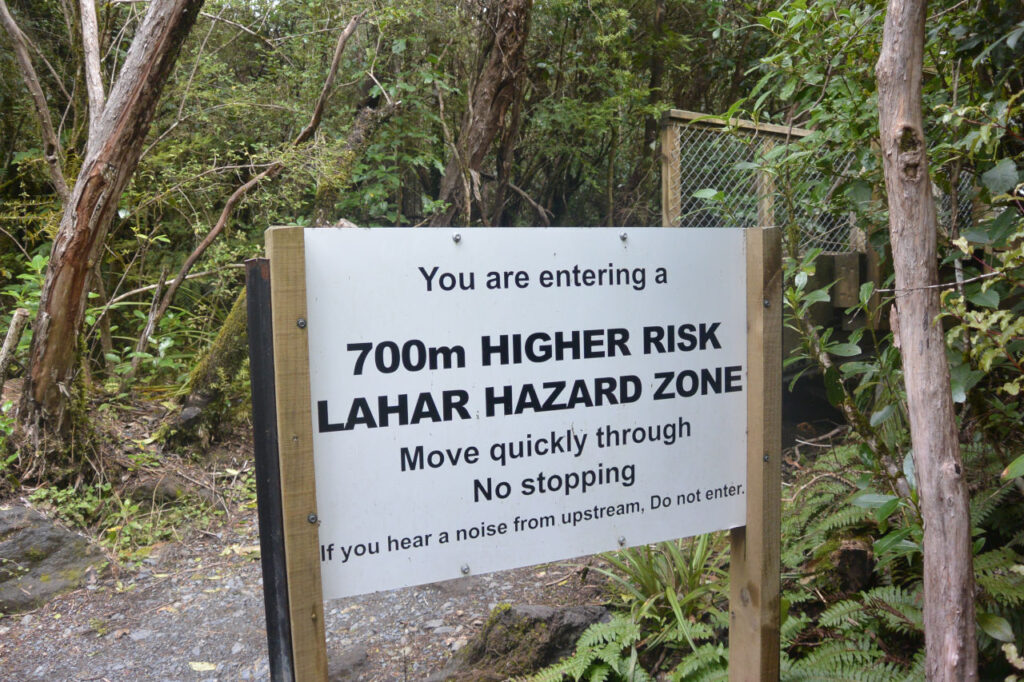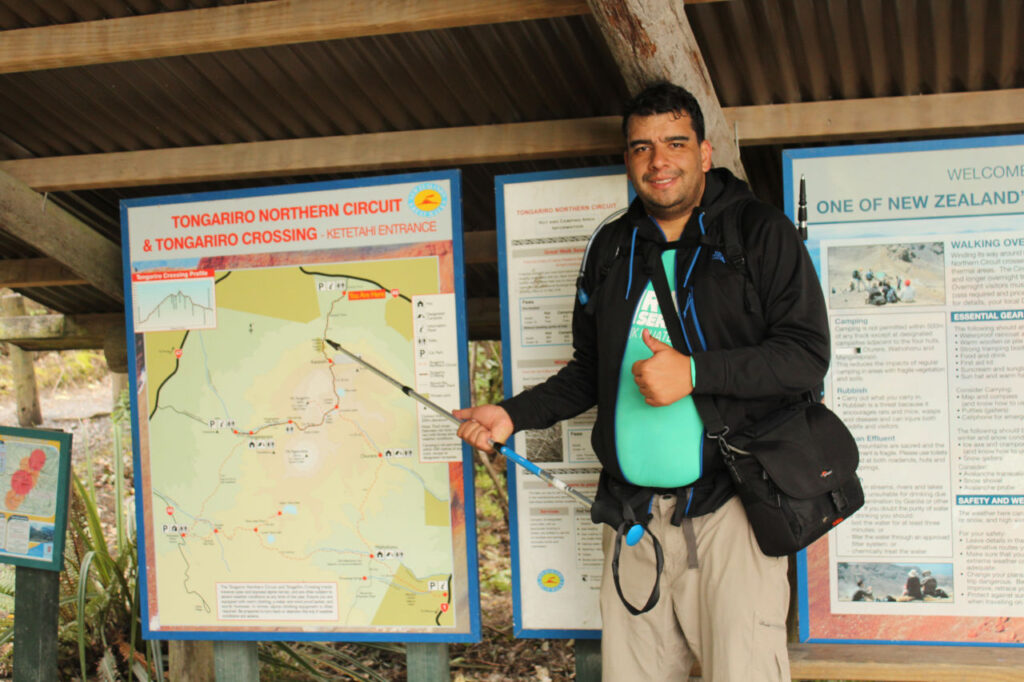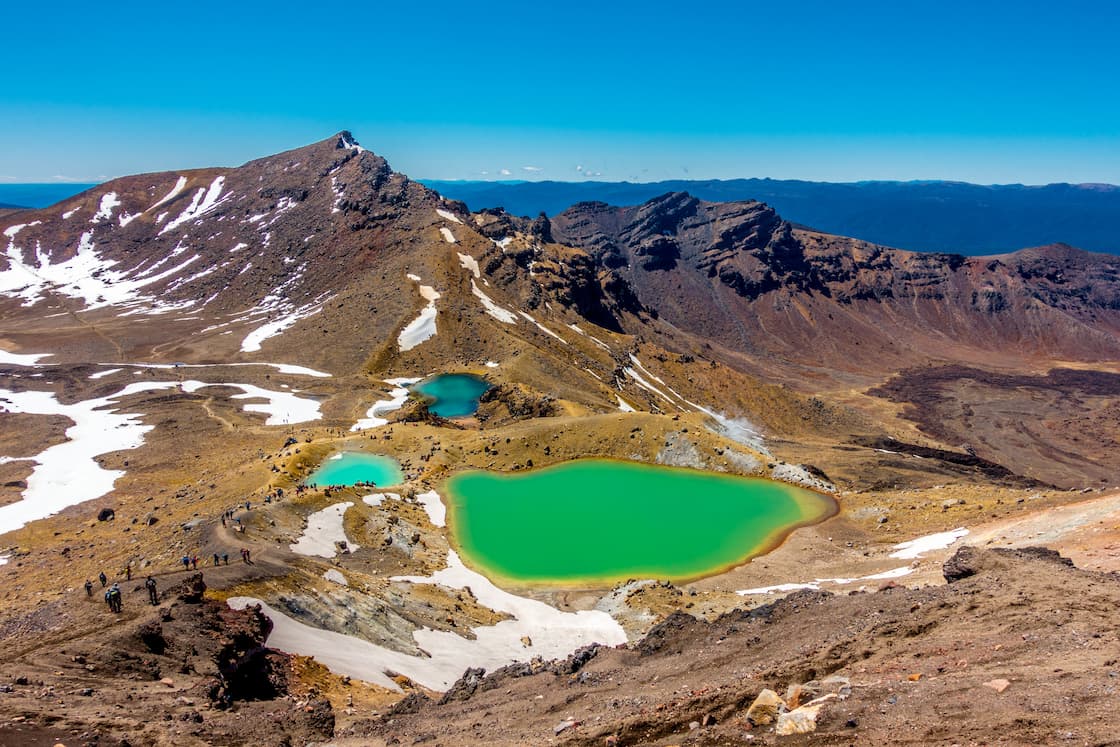
New Zealand’s Most Epic Trek
The Tongariro Alpine Crossing is considered one of the most spectacular day treks in the world.
Because it is an alpine environment, the weather changes quickly and drastically. It is essential to be well prepared and aware of the difficulties.
Due to the excellent infrastructure, I do not consider it difficult, but for those who are not experienced it can be quite challenging.
Located in the center of New Zealand’s North Island, this approximately 20.2 km trail crosses surreal landscapes, full of active volcanoes, emerald lakes, ice, snow and vast plains of solidified lava.
Since it is a crossing, we went to the end of the trail and left the motorhome and hired a shuttle to the beginning.
That way, when we reached the end, we would be “home”, since we would be in the Motorhome.
We took the motorhome and returned to Whakapapa Village, spent the night and the next day we went to Wellington.
NOTE: In 2016 there was no parking time restriction, but now there is a 4-hour restriction and it is advisable to hire a transfer instead of leaving your car in the Mangatepopo and Ketetahi parking lots.
If you are planning to take on this adventure, this guide will help you understand everything about the trail: what to expect, how to prepare and what are the best tips to make the most of this experience.
What is the Tongariro Alpine Crossing?
This trail crosses the Tongariro National Park, a UNESCO World Heritage Site. The park is home to three main volcanoes: Tongariro, Ngauruhoe and Ruapehu.
Fun fact: Mount Ngauruhoe served as the inspiration for Mount Doom in the film “The Lord of the Rings”.
The entire route takes between 6 and 8 hours, depending on the pace and weather conditions. The trail is not a circuit, which means you start at one point and finish at another.
Booking
Visitors to the Tongariro Alpine Crossing are expected to book their visits in advance through a booking system managed by the Department of Conservation (DOC).
There is no charge for bookings and no limit on the number of bookings for the stations, but they are required for those using buses and guided walks, and for anyone using any part of the Tongariro Alpine Crossing track.
Reservations for the Tongariro Alpine Crossing can be made by completing an online form on the DOC website, in person at a DOC visitor centre or through a walking guide or shuttle service.
Also be sure to book transport for your journey, as parking is limited at both ends of the track – with a four-hour time limit from mid-October to April.
In winter from November to March there should be no restrictions, but it is important to check with the park.
How to Prepare for the Trail.
Before you pack your backpack, it is essential to be well prepared. Here are some important points:
1. Choose the Best Time of Year.
Summer (between November and April) is the best time to hike. The weather is more stable and temperatures are more pleasant.
In winter, the trail can be covered in snow and require specialized equipment. I hiked the trail in September.
2. Weather Conditions.
The weather in Tongariro changes quickly. Even in summer, you can face strong winds, rain and sudden drops in temperature. So check the weather forecast before you go.
3. Essential Equipment.
- Appropriate clothing: Dress in layers, including a waterproof jacket.
- Appropriate footwear: Trekking boots are ideal, as they provide grip and support.
- Sun protection: Even on cloudy days, the sun can be intense.
- Food and hydration: Bring at least 2 liters of water and energy-rich snacks.
4. Transportation.
As the trail is not circular, the best option is to hire a transfer service that takes you to the starting point and picks you up at the end.
The Route: What to Expect on the Tongariro Alpine Crossing?
The trail can be divided into distinct sections, each with its own particularities:
1. Mangatepopo Valley.
The beginning is relatively easy, with a slight incline crossing a valley formed by ancient volcanic eruptions.
2. Subida a Cratera Sul.
Aqui começa o verdadeiro desafio. A subida é íngreme e exige preparo físico, mas a vista do alto compensa cada passo.
3. Red Crater e Emerald Lakes
O ponto mais alto da trilha (1.886 metros) oferece uma visão deslumbrante. A descida até os lagos esmeralda é escorregadia, então tenha cuidado.
4. Blue Lake e a Descida Final
A partir daqui, o percurso é mais tranquilo. O Blue Lake é um lugar sagrado para os maoris, então evite tocar na água. A trilha segue descendo até a área de Ketetahi, onde termina.
What to Pack
Be sure to pack the following essentials:
- Food and plenty of fluids, especially in the summer months. If you are planning to complete any of the summit trails, be sure to have extra supplies of water.
- Rain jacket and waterproof and windproof pants
- Sturdy, sturdy boots (you will be hiking over uneven volcanic terrain)
- Warm layers: wool or polypropylene thermals and fleece
- Hat and gloves
- Sunscreen and sunglasses
- First aid kit
- Map
- Cell phone
Due to the rugged, alpine environment, the weather at the trailhead parking lot can be very different from the conditions 1000 meters higher up the trail.
Be prepared to change your plans and turn back, especially when visibility is poor or strong winds are prevailing.
Extra Tips for Getting the Most Out of the Trail
- Start early: This avoids crowds and reduces the risk of bad weather.
- Respect nature: Take your rubbish back with you and follow local rules.
- Have a plan B: If the weather changes drastically, don’t hesitate to cancel.
Tongariro Alpine Crossing in winter (June to October).
You need experience and special skills and preparation to complete the Tongariro Alpine Crossing in winter (June to October). There is an increased risk of snow, ice, avalanche terrain and sub-zero temperatures.
If you are not experienced in hiking in alpine terrain in winter conditions, a guided trip is recommended.
The weather on the Tongariro Alpine Crossing is subject to severe alpine conditions and can be extreme, particularly on the ridge of Red Crater. You can expect snow, ice and strong winds.
It is important to pay attention to weather forecasts that are used as an initial guide and be prepared for drastic changes.
Medical conditions including epilepsy, blood pressure complications, heart problems and chronic asthma may prevent you from joining the group.
Since I have experience, I did it without a guide. It is not necessary because the trail is very well marked, but if you want to or do not have experience, find a guide for the Tongariro Alpine Crossing, see here
See the official information on the park website
Is the Tongariro Alpine Crossing worth it?
Definitely! If you like hiking and want to experience a surreal landscape, this is a must-do experience in New Zealand.
Now that you know everything about the Tongariro Alpine Crossing, how about starting to plan your adventure? Share this guide with other travelers and continue exploring the world with Discovering Worlds!
Happy hiking! 🌲💚

